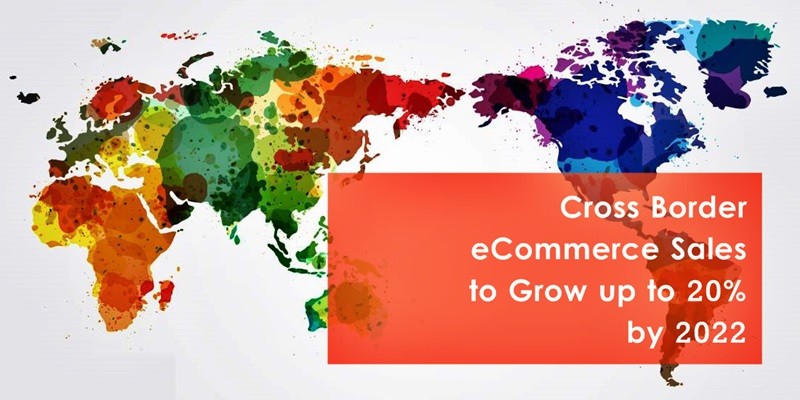
Currently, there are over 300 million upper-middle class consumers in China. These consumers desire imported products that offer them a high quality and premium experience.
Approximately 61% of Chinese consumers who shop abroad do so because of the quality of the products. Therefore, the demand for overseas goods in China is steadily increasing. Cross-border e-commerce (CBEC) is a new sales channel wherein consumers can directly buy products from overseas retailers and suppliers via the internet. In China, cross-border E-commerce is expected to reach 1.32 trillion US dollars in 2018. The large market scale and low cost of entry in CBEC create opportunities for niche brand to easily enter a foreign country.
China CBEC imported model:
There are two main methods of cross-border e-commerce: the bonded import method and the direct purchase import method. The bonded import method is further broken down into the bonded warehouse model (B2B2C) and the direct mail (B2C) model. The import tariff for B2B2C and B2C is temporarily set at 0 percent and VAT is at 11.9 percent.
B2B2C Model:
This model can be summarized as “stock first, order later.” Goods on the “positive list,” which included nearly 1300 commodity categories, are not required to submit an import license to Customs. The new “positive list’ regulation is improving the B2B2C model, allowing companies to import listed goods efficiently, and approving the CEBC bonded warehouse zone for convenience. When the orders are generated, the products can go through customs clearance directly. Therefore, this efficient supply model enables customers to receive goods within 2-3 days of ordering. The most famous company using this CEBC method is KaoLa, which holds the largest bonded warehouse in China. Through its self-operated bonded warehouse, KaoLa opened the country to global health and wellness products.
Effective January 2018, the new requirements for bonded warehouses require certain goods to obtain a certification from the China Food and Drug Administration (CFDA) before they can be sold in Mainland China.
B2C Model:
This model can be described as “order first, deliver later.” Here, the CEBC platform needs to provide three records – order, shipment and payment – in order to deliver the imported goods. The packages will be delivered from the overseas distribution center to Chinese customs and then released when the three records have been submitted to satisfy the requirement. In comparison to the B2B2C model, the B2C model is more complex for the companies, and creates a longer wait time. T-mall Global is the first and largest official B2C platform, offering 5400 international brands via various country pavilions.
Supply Chain Management Strategies for ECBC:
Supply chain management is critical to the long term success of an ECBC company. As ECBC continues to grow, more and more supply chain problems are identified. Hwbang CKO is investigating whether to have an overseas warehouse for new ECBC entrants. The answer is dependent on the volume of the order. If there is a lower order quantity, overseas warehouses will not be effective due to the high operating cost. An additional challenge is to determine whether to have a bonded warehouse. Here, resources are often limited, and policies vary in each location for building a bonded warehouse. Hwbang CKO also recognizes that the company should be able to trace the sources at each stage of the supply chain to enable the consumers to verify and authenticate the products.
Changes to Cross-Border E-Commerce:
Current data shows that the largest CEBC companies, T-mall Global and KaoLa, have offline stores for cross-border e-commerce. JingDong is also planning to establish an offline store for CEBC. The goal is to pomote less widely known foreign products to consumers who would normally not be aware of them. The CEO of Bangmart said that consumers employ a “searching” logic when shopping online. They must know about the product and then research it before finally purchasing it. Cross-border e-commerce companies in China emphasize the value of offline stores so that consumers can become familiar with the products before buying them.
Read about our market entry and expansion consulting services and our experience in the technology sector.
The insights provided in this article are for general informational purposes only and do not constitute financial advice. We do not warrant the reliability, suitability, or correctness of the content. Readers are advised to conduct independent research and consult with a qualified financial advisor before making any investment decisions. Investing in financial markets carries risks, including the risk of loss of principal. Past performance does not guarantee future results.
The views expressed herein are those of the author(s) and do not necessarily reflect the company's official policy. We disclaim any liability for any loss or damage arising from the use of or reliance on this article or its content. ARC Group relies on reliable sources, data, and individuals for its analysis, but accuracy cannot be guaranteed. Forward-looking information is based on subjective judgments about the future and should be used cautiously. We cannot guarantee the fulfillment of forecasts and forward-looking estimates. Any investment decisions based on our information should be independently made by the investor.
Readers are encouraged to assess their financial situation, risk tolerance, and investment objectives before making any financial decisions, seeking professional advice as needed.



